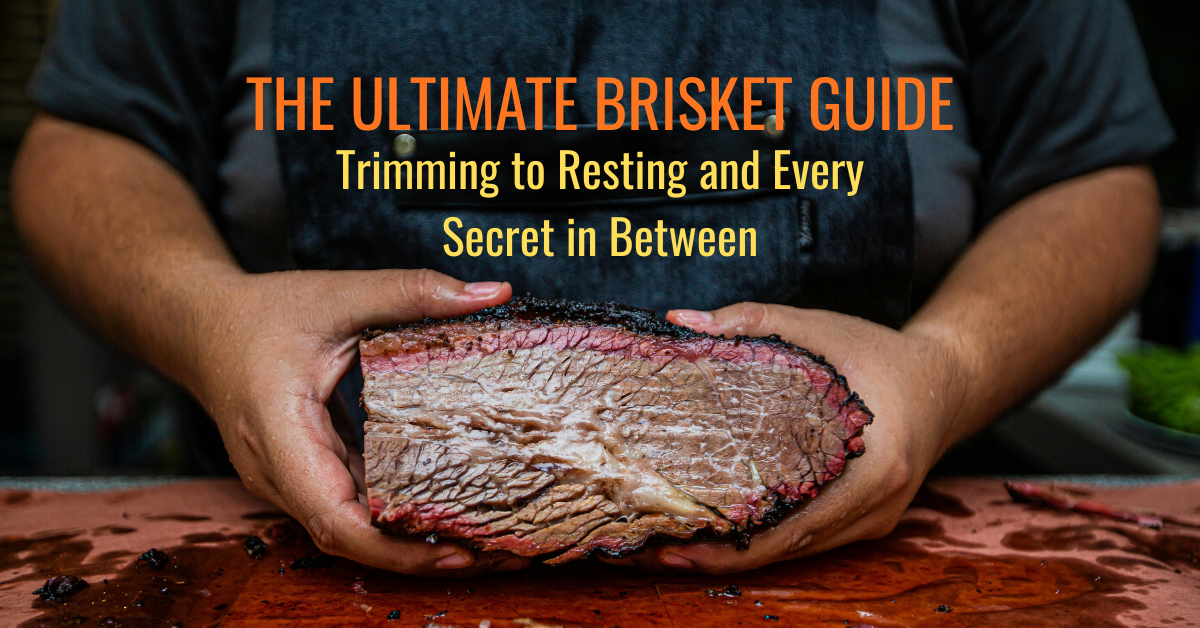Avoid the biggest BBQ mistakes and cook like a Texas pitmaster. Learn why brisket dries out, how to manage smoke, airflow, seasoning, and temps for perfect results every time.
Ask any Texas pitmaster and they will tell you: BBQ is unforgiving. Hours of patience can be ruined by a small mistake. Slice too early, and juices pour out. Add too much smoke, and your meat tastes like an ashtray. Cook too hot, and your brisket turns to leather.
The truth is, every pitmaster has made these mistakes. The difference between frustration and success is knowing how to fix them and building the patience to do it right.
We asked experienced Texas pitmasters to share the most common BBQ mistakes they see and the exact fixes that will save your brisket, ribs, or pulled pork from disaster.
1. Cutting Into Meat Too Soon
- Why It Happens: Excitement, hunger, or a crowded backyard pushing you to slice right away.
- The Consequence: Juices spill out instead of redistributing, leaving dry, chewy meat.
- The Fix: Rest brisket for 1–4 hours in a cooler, ribs for at least 30 minutes, and chicken for 15–20 minutes.
💡 Pro Tip: Wrap brisket in butcher paper, then a towel, and hold in a cooler. This creates a “faux cambro” that keeps meat hot for hours without drying out.
2. Using Green or Wet Wood
- Why It Happens: Grabbing freshly cut logs or cheap wood bundles at the store.
- The Consequence: Thick white smoke from unseasoned wood makes meat taste bitter and acrid.
- The Fix: Use seasoned wood with 15–20% moisture. Post oak is the Texas favorite, but pecan and hickory also work well.
📦 Gear Tip: Firewood moisture meters are inexpensive and guarantee you are burning the right wood.
3. Relying on Time Instead of Temperature
- Why It Happens: Following recipes that say “smoke brisket for 10 hours.”
- The Consequence: Undercooked or overcooked meat since no two briskets are the same.
- The Fix: Cook to internal temperature and feel, not just hours on the clock. Brisket should probe like warm butter at 200–203°F.
📦 Gear Tip: Instant-read thermometers and dual-probe monitors are essential.
4. Too Much Smoke (or the Wrong Kind)
- Why It Happens: Loading the firebox with too much wood or smothering the fire.
- The Consequence: Heavy, dirty smoke that tastes bitter and masks the rub.
- The Fix: Keep a small, clean fire producing thin blue smoke. Add splits only when the coal bed needs it.
💡 Pro Tip: Watch the exhaust — if the smoke smells sharp or stings your eyes, it will taste bad too.
5. Skipping the Rest Period
- Why It Happens: Rushing to serve or underestimating how important rest really is.
- The Consequence: Dry brisket, ribs, or pork that looks juicy at first but dries instantly.
- The Fix: Rest all meats, period. Even chicken benefits from 10–15 minutes. For brisket or pork shoulders, hold in a cooler for hours.
6. Not Controlling Airflow
- Why It Happens: Constantly opening the lid or fiddling with vents.
- The Consequence: Temperature swings that stress the meat and make cooking unpredictable.
- The Fix: Learn your smoker’s vent positions and resist the urge to peek. “If you’re lookin’, you ain’t cookin’.”
📦 Gear Tip: Temperature controllers or digital draft fans are game-changers for consistency.
7. Overseasoning or Using the Wrong Rub
- Why It Happens: Thinking “more rub = more flavor.”
- The Consequence: An overpowering crust that hides the natural flavor of smoked meat.
- The Fix: For brisket, Texas pitmasters keep it simple: kosher salt and coarse black pepper. For pork or chicken, balanced rubs with sweet and spicy notes shine.
💡 Pro Tip: Taste your rub before you use it. If it tastes off by itself, it will taste worse after smoking.
8. Using Lighter Fluid or Quick-Light Charcoal
- Why It Happens: Impatience or lack of gear.
- The Consequence: Chemical aftertastes that ruin hours of careful cooking.
- The Fix: Use a chimney starter with natural lump charcoal or briquettes. Add clean wood splits for smoke.
📦 Gear Tip: Charcoal Chimney starter is ideal way to avoid that chemical taste.
9. Cooking Too Hot for the Cut
- Why It Happens: Treating all meat the same.
- The Consequence: Brisket and pork shoulder come out dry and tough if cooked too hot.
- The Fix: Brisket and pork shoulder thrive at 225–250°F. Ribs and poultry handle 275–300°F. Match your heat to your cut.
10. Ignoring the Weather
- Why It Happens: Forgetting that outdoor cooking is affected by conditions.
- The Consequence: Wind stokes fires, cold drains heat, and humidity slows evaporation. All of this changes cook time and fuel needs.
- The Fix: Shield smokers from wind, stock extra wood or charcoal in cold weather, and monitor temperatures carefully on humid days.
Bonus Mistake: Rushing the Cook
- Why It Happens: Impatience or hungry guests.
- The Consequence: Undercooked or tough meat, or meat pulled off before fat has rendered.
- The Fix: BBQ is ready when it is ready. Build in more time than you think you need, and keep snacks handy for guests.
Final Thoughts
Great BBQ is not just about choosing the right cut or rub. It is about avoiding mistakes that can undo all your effort. By managing fire, airflow, seasoning, smoke, and patience, you can create BBQ that rivals the best joints in Texas.
Remember: the pit does not forgive, but it rewards patience. Slow down, respect the fire, and your BBQ will speak for itself.




